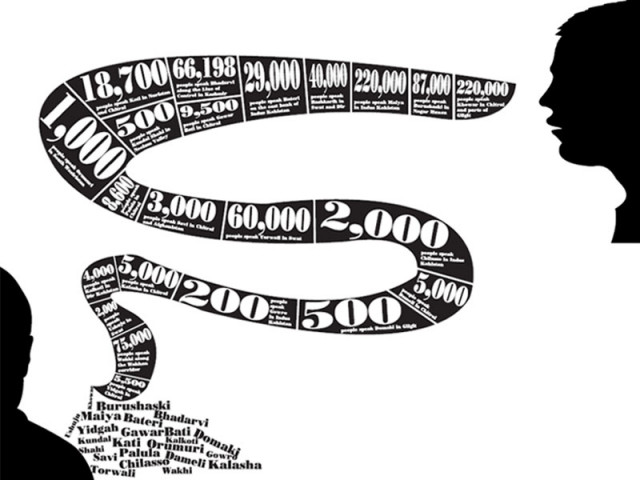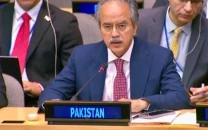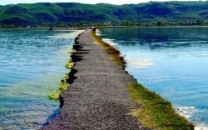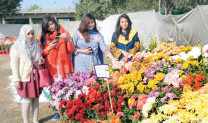Battle of survival: Watching the tongues slip into extinction
UNESCO documents around 28 endangered languages.

Battle of survival: Watching the tongues slip into extinction
A classic case of irony.
While lawmakers table ‘ethno-linguistic’ basis for the creation of new provinces; in hindsight, the debate renders itself preposterous given the fact that 28 of the languages across the country are dying out.
Preservation seems to be one item missing from the to-do lists of lawmakers.
Khyber-Pakhtunkhwa (K-P) and other northern areas of the country are host to about half of languages spoken in Pakistan — a significant majority of which have been listed as ‘endangered’.
The United Nation Educational, Scientific and Cultural Organisation (UNESCO) Atlas of the World Languages in Danger documents around 28 Pakistani languages as endangered in various categories. The UNESCO Atlas lists six of these languages as ‘severely endangered’, 15 as ‘definitely endangered’ and seven as ‘vulnerable’.
Dying out
According to the UNESCO report, among the languages Pakistan could potentially lose are: Khowar spoken in Chitral and parts of Gilgit with an estimated number of 220,000 speakers left; Burushaski spoken in Nagar Hunza which has 87,000 speakers left; Maiya in Indus Kohistan with 220,000 speakers left; Purik is mainly spoken in Kashmir; however, data regarding the exact number of speakers is not available.
Furthermore, Bashkarik is majorly spoken in Swat and Dir by around 40,000 people, Bateri on the east bank of Indus Kohistan with 29,000 speakers, Bhadarvi along the Line of Control in Kashmir with 66,198 speakers, Gawar Bati in Chitral with 9,500 speakers, Kati in Nuristan and Chitral by 18,700 people, Kundal Shahi in Neelum Valley with just 500 speakers, Orumuri in South Waziristan with a 1,000 speakers, Palula in Chitral with 8,600 speakers, Savi in Chitral and Afghanistan with 3,000 speakers and Torwali in Swat is spoken by around 60,000 people.
Similarly, Chilasso is spoken in Indus Kohistan with around 2,000 speakers left, Dameli in Chitral with 5,000, Domaki in Gilgit with 500, Gowro in Indus Kohistan with around 200, Kalasha in Chitral with 5,000, Kalkoti in Dir Kohistan with around 4,000, Ushuju in Swat with 2,000, Wakhi along Wakhan corridor with 75,000, Yidgah in Chitral with 5,500 and Zangskari whose exact number of speakers are not available.
No preservation
However, Forum for Language Initiative (FLI) Programme Manager Mohammad Zaman Sagar has questioned the authenticity of the figures. Zaman told The Express Tribune that there is a Badeshi dialect in Swat, which is on the verge of extinction, has only two speakers left.
He added that the number of speakers of the Gowro language are stated to be around 40,000, while the total population of Kalam stands at around 70,000.
“Some of these figures are as old as 1970s,” he said.
Zaman believes lack of documentation to be a major hurdle in the preservation of these languages. According to him, only Khowar, Palula and Kalasha have been documented for in Chitral out of more than a dozen languages spoken in the region; only Gowro and Torwali have been documented for in Indus Kohistan and Swat out of around six languages; and only Indus Kohistani and Sheena have been documented for in Indus Kohistan out of as many as six languages.
The FLI programme manger said that even on the national level, proper documentation has only been conducted of around 20 languages.
He said that Yidgha in Lotkuh was under threat of extinction with hardly 1000 speakers left, while Badeshi and Ushuju in Swat, Gowro and Bateri in Indus Kohistan, Domaki in Gilgit and Kundal Shahi in Kashmir were also endangered.
Zaman lamented government apathy towards these languages and said: “We will only be able to express our sorrow, after a language dies down.”
Restive frontiers
Lack of an official body monitoring preservation is not the only obstacle. Militancy in the tribal belt has also created significant stumbling blocks for the preservation of these languages — with Ormuri in South Waziristan as a classic victim.
Unofficial figures state that Ormuri is spoken by around 10,000 peoplein the the Kaniguram area of the South Waziristan — a remote village in Mehsud tribe’s heartland.
“The number of Orumuri speakers is about 10,000,” said Zaman, adding that a majority of locals who used this language have been displaced due to militancy — scattering them across the country.
“Within a community, a language is automatically preserved when you speak it, but when a group is displaced, the chances of that language being abandoned or dying out are much higher,” Zaman said.
Lack of govt support
Fakhruddin Akhundzada, a language activist belonging to Chitral and associated with the FLI, was of the view that the lack of government support was the basic hurdle in preservation of these languages.
“Unlike Urdu, which is language to only six percent of the population, no other language gets any attention from the government,” he said.
He pointed out that there was no law at the federal or provincial level to encourage and preserve these languages except a recent effort by the K-P government to set up a language authority.
However, Akhundzada believes that the advent of social media and the telecommunication revolution maybe be serving as a blessing in disguise for these dying languages.
“Most of these languages do not have any script; however, use of Romanised versions by many people in short messaging service (SMS), chatting and Facebook, have recently risen,” he said.
It seems though, without concerted efforts on the part of the country as a whole, we may very well not hear the sound of these languages again.
Published in The Express Tribune, February 21st, 2012.


















COMMENTS
Comments are moderated and generally will be posted if they are on-topic and not abusive.
For more information, please see our Comments FAQ